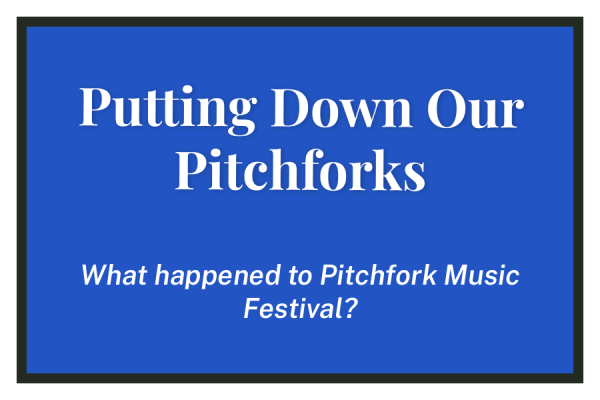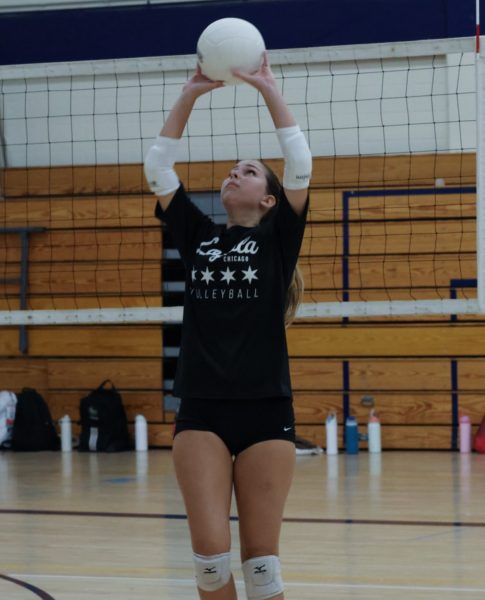Bullying Prevention Month
Carrie Goldman Visits Parker
Photo credit: Anna Fuder
Guests listen intently to Carrie Goldman speaking about bullying and social conflicts at the Bullying Workshop.
On September 12, Goldman’s heels clicked as she walked across the stage to reach the podium. Her brown curls bounced as she greeted the high schoolers with a smile. “Bullying and Social Conflict” immediately flashes across the screen in large blue font.
10 years ago, Carrie Goldman worked as an investment banker at J.P. Morgan. Lofty office buildings and dull cubicles were her forté.
Today, Goldman is an award-winning author, keynote speaker, and journalist. High School auditoriums with rows of eyes laid upon her. Gymnasiums that echo her every word, overwhelmed by whispering teenagers. This is her life now.
Goldman has received the National Parent Publication Award and a Mom’s Choice Award for the utilization of educational skills and tools in her book, “‘Bullied: What Every Parent, Teacher, and Kid Needs to Know About Ending the Cycle of Fear.” She has written for a variety of media and news outlets including “The New York Times”, CNN and NPR. Goldman received her B.S. from Northwestern University and her MBZ from the Kellogg School of Management. “I have always been a writer. The weird part was not that, but that I started in finance,” said Goldman.
Goldman is constantly traveling across the country giving keynote addresses and leading workshops in order to furthers extend her knowledge of bullying dynamics. She most often offers these presentations to companies, universities, schools, and community groups.
“Half the time, if I am brought into a school because schools are trying to get everyone off on the right foot those visits are usually more precautionary,” said Goldman, “Although, they always tell me about incidents that happened in the previous year–especially when I get called in during the spring months. Then, my presentations are usually responding to a particular incident.”
Although Brandon says he is open to the idea of inviting Goldman back to Parker in light of a particular incident, he says that Goldman’s presentation was not utilized for this purpose. “For the beginning of the year, I thought this presentation would be a good way to set the tone. It was a reminder to students that we are a community,” Brandon said. “I wanted to make sure that we were all respecting one another.” When asked if she possessed any knowledge of previous student incidents at Parker, Goldman said, “I did. I spoke with the middle school last year, so I already knew the school. I also had spoken with Justin about the types of incidents that students encounter here. You know, things like sexting, unkind comments. These things are not unique to Parker, though. It’s part of being in high school.”
In preparation for this event, Bradon communicated with Goldman about which topics would be most important to discuss at both student and teacher workshops, “I talked with her about social media usage. Coming in my first year and trying to figure out Parker, most of the issues that came to my attention were focused around social media,” Brandon said. “Hearing the questions asked to the school attorney who talked to the freshman last year helped inform me about what Ms. Goldman needed to talk about.”
Although Goldman speaks about the movie stereotypes and universal ‘high school problems’,” she describes needing to adjust her curricula based on Parker’s identity as a private school. “At private schools, students are free from the rules and regulations that govern public schools,” said Goldman, “Therefore, their responses to disciplinary issues can be more punitive. If someone does something you really don’t like in a private school, you can kick them out immediately. In public schools, it’s not that simple.”
Goldman suggests that private school behavior patterns are observable at Parker. “At private schools you might see a little less extreme behaviors, or at least publicly known about, because if the school find out, that’s it. You’re out.” In addressing the topic of bullying at Parker, sophomore Takato Muro appears to be conflicted. His eyes dart across the vibrant yellow locker room. “I don’t see that much overt bullying around Parker,” Muro said, “But then again, I might not be looking in the right places.”
Throughout her presentation, Goldman’s comments about video games or sexting seemed to trigger a roar of laughter, whereas, other topics resulted in utter silence. “It was interesting to see how quiet and focused the room became when I started talking about certain slides,” Goldman said. “One was the idea that a lot of bullying and aggression can happen within your own friend group. It isn’t always just popular football player picking on disabled kid. Within your own clique, you can have a very hard time as you jockey for position. The room became very focused on that, so that tells me that people are familiar with that feeling of maintaining status within their own group.”
In her proposed methods to manage social conflict, Goldman suggested de-escalation as the best option. “De-escalation is usually what you want, especially around conflict,” Goldman said. “I particularly think if students are upset with each other, it should not be handled in a digital format. That just creates drama. The only way to handle social conflict is face to face.”
When asked if he though his peers took to heart any of the solutions suggested in Goldman’s presentation, Muro nodded confidently. “I certainly have. I try to keep these things in mind when I am dealing with conflict with my own friends.” said Muro, “I don’t know about my peers, though. They seem bored about the fact that we have had so many talks about bullying in the past. Seems kind of repetitive.”
“I have a big, thick stack of books on parenting. They’re all filled with amazing advice. But everything is much easier said than done,” Goldman said.








